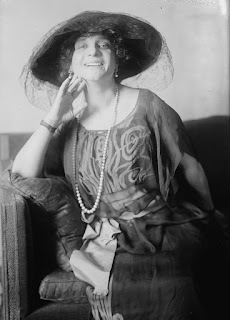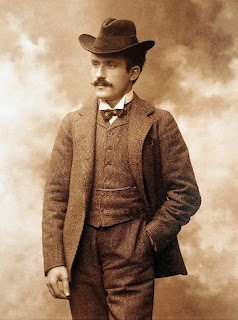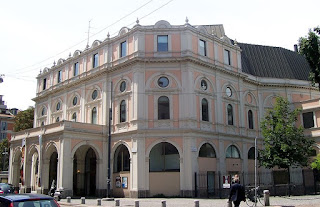Milanese artist who designed FIFA World Cup trophy
Silvio Gazzaniga, the sculptor and medal-maker who created the trophy held aloft every four years by the winners of football’s World Cup, was born in Milan on this day in 1921.
The 18-carat gold FIFA World Cup,
created by Silvio Gazzaniga
Gazzaniga designed the trophy, with its spiralling lines depicting two players, with arms outstretched in triumph, carrying a globe on their shoulders, in 1971, after entering a competition organised by football’s world governing body, FIFA.
The organisation had been faced with a dilemma after the 1970 World Cup, when champions Brazil earned the right to keep the Jules Rimet Trophy, the prize for which the competition was originally played, by winning for the third time.
In the knowledge that they would need a new trophy before the next tournament, in 1974, they invited designers to submit their ideas, eventually collecting 53 proposals from artists all over the world.
Among them was the submission from Gazzaniga, a football fan and the artistic director of Bertoni, a small firm making medals and trophies now based at Paderno Dugnano, a town on the outskirts of Milan.
Gazzaniga did much of his work in a modest studio in the artists’ quarter of the Lombardy capital, between the Sforzesco Castle and the Brera Academy. A jeweller and goldsmith, who had watched with disappointment as Italy succumbed to the brilliance of the Brazilians in the 1970 final, he closeted himself away for a week, making etchings and moldings, until he satisfied himself that he had realised the concept he had envisioned.
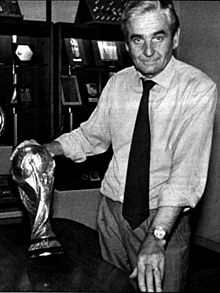 |
| Gazzaniga entered a competition to design the trophy for FIFA |
“Energy, force, strength, dynamism, roughness, agility, speed, success, achievement, victory, triumph. All this had to turn around and embrace the world, who is over all and over every single man.”
He held out little hope that his design would be chosen, especially after months passed when he heard nothing. But eventually a message reached him from FIFA that his had been selected. By the following January it had been cast in 18 carat gold, 36.8cms (14.5in) tall, its base 13cms across, weighing just over 6kg.
The German captain Franz Beckenbauer was the first to raise the trophy above his head, in Munich in 1974, but it was the sight of Dino Zoff waving it in the direction of the Italian fans in the Santiago Bernabéu stadium in Madrid eight years later that meant the most to Gazzaniga.
Brought up in the economically hard times of the 1930s, Gazzaniga began to realise his artistic talents in the 1940s, attending the Humanitarian School of Applied Art and the High School of Art at the Sforzesco Castle.
 |
| Dino Zoff was the first Italian captain to lift Gazzaniga's trophy |
After FIFA adopted his World Cup design, his career took off. Although he made nothing from the World Cup trophy itself, with FIFA retaining the image rights, he was invited to create other important football trophies, for the UEFA Cup and the UEFA Super Cup, as well as trophies for the Baseball World Cup, the Bobsleigh World Cup and the Volleyball World Cup.
In 2011, Giorgio Napolitano, the President of the Italian Republic, decided to create a trophy to commemorate the 150th anniversary of the unification of Italy and commissioned Gazzaniga to create this trophy to mark the occasion.
Gazzaniga died in 2016, passing away in his sleep at the age of 95. He had lived to see one more Italian captain lift his trophy, Fabio Cannavaro in Berlin in 2006. Married to Elsa for 60 years, he left a son, Giorgio, and a daughter, Gabriella.
Travel tip:Milan's Accademia di Belle Arti di Brera
is at the heart of the city's artists' quarter
Milan’s Accademia di Belle Arti di Brera, sometimes shortened to Accademia di Brera, is a state-run tertiary public academy of fine arts in Via Brera in the city’s artists’ quarter, in a building it shares with the Pinacoteca di Brera, Milan's main public museum for art. The academy was founded in 1776 by Maria Theresa of Austria and shared its premises with other cultural and scientific institutions, including an astronomical observatory, botanical garden, school of philosophy and law, laboratories for physics and chemistry, and a library. The main building, the Palazzo Brera, was built in about 1615 to designs by Francesco Maria Richini.
Travel tip: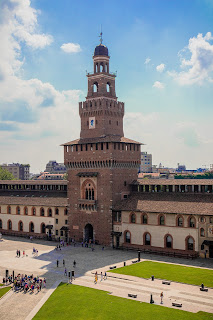
The imposing central tower of
the Castello Sforzesco
The Castello Sforzesco, which is close to where Silvio Gazzaniga had a small studio, is an impressive and important building in Milan, situated to the northwest of the city centre, with the Parco Sempione behind it. Francesco Sforza built it on the site of the Castello di Porta Giovia, which had been the main residence in the city of the Visconti family, from which Francesco was descended. The Viscontis ruled Milan for 170 years. Renovated and enlarged a number of times in subsequent centuries, it became one of the largest citadels in Europe and now houses several museums and art collections.
Also on this day:
1752: The birth of composer Muzio Clementi
1881: The birth of heiress and artists’ muse Luisa Casati
1980: The death of car designer Giovanni Michelotti
1992: The killing of Sicilian politician Salvatore Lima

















